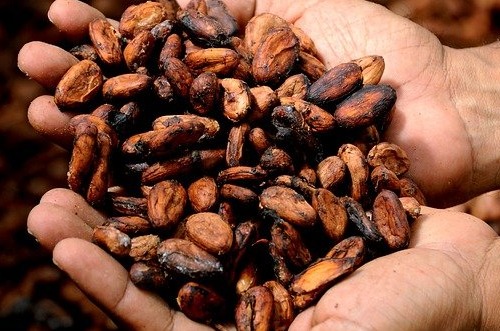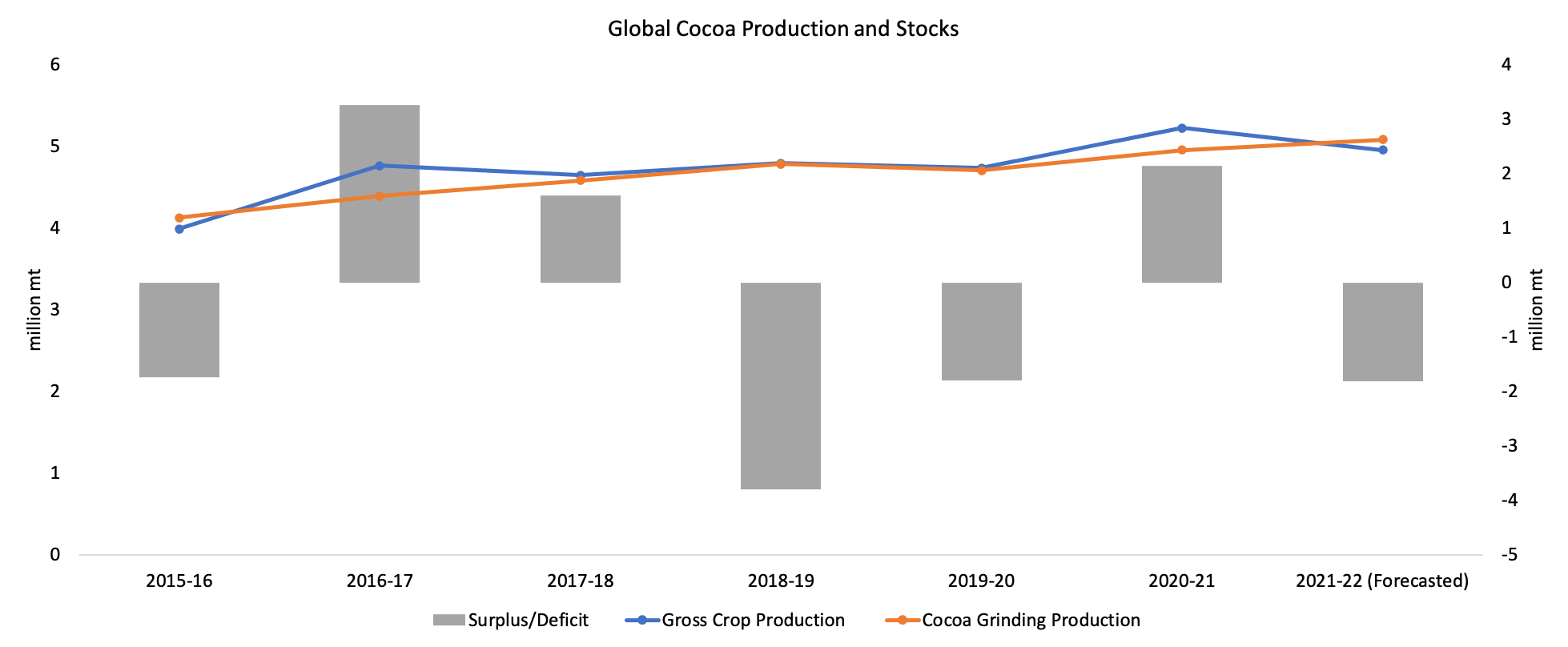Forecasts of Lower Cocoa Production for 2021-22 and Its Impact on Easter Eggs

In 2021, The two largest cocoa producing and exporting countries, Côte d’Ivoire and Ghana, recorded a fall in production, due to changing weather conditions. The 2021-22 production season started a little slowly due to below-average rainfall during the main growing period of cocoa pods, resulting in a large deficit in cocoa crops and grindings. According to the data released by the International Cocoa Organization (ICCO), cocoa production for the years 2021-22 is forecasted at 4.9 million mt, which is 5.2% less than last year’s production volume. The overall deficit of global cocoa stocks stands at 1.81 million mt. Given that the season for 2022 has just started, it is difficult to say whether production will recover or not. However, it is expected that the price of cocoa beans will continue to increase due to rising global demand and the increasing cost of production.

Source: ICCO
Cocoa is the key ingredient for chocolate processors, as the seeds of the bean are used to produce a fluid paste or liquor. This is further processed into cocoa powder and chocolate, which is enjoyed across the world. Currently, the cocoa-producing countries are struggling to keep up with the demand from these large processors and are being forced to increase the prices of the product. A recent review by the Senior Dining Association has shown that Hershey's, which is the largest producer of chocolate products in the United States, has increased the prices of its products due to the rising cost of basic ingredients.
According to the Wall Street Journal, lower production in the lead cocoa exporting countries is the root cause of price hikes. Overall, cocoa futures rose to a 5-week high of around USD 2,561 per ounce, a YoY increase of 91.33%. The problem has been exacerbated by high demand from chocolate processing companies as they prepare themselves for Easter 2022 celebrations. Normally, the demand for "chocolate eggs" peaks around 3-4 weeks prior to the festival across North America, South America, and European Union and any increase in the price has a significant impact on the sales of easter eggs in these regions. In the coming weeks, the situation is likely to worsen as the shortages of fertilizers on cocoa farms amid trade disruptions from Russia and Belarus are set to affect the quantity, quality, and size of cocoa beans harvested.






